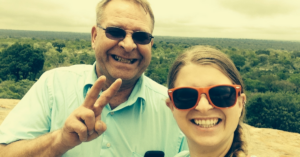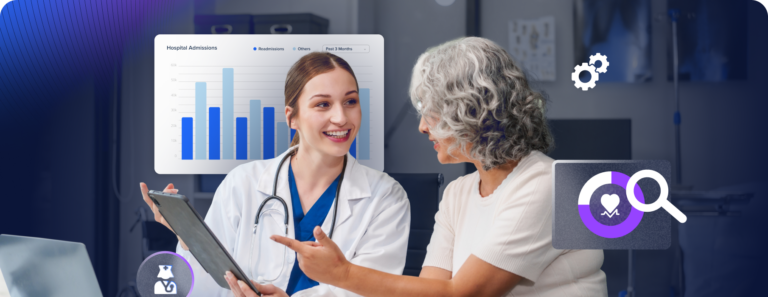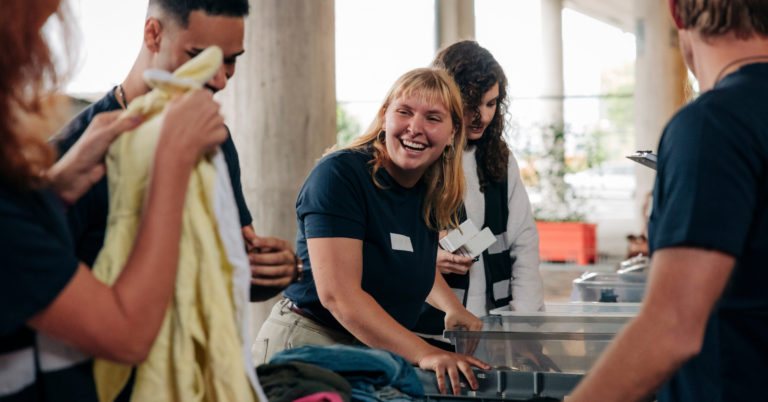
In Their Own Words: Navigating the System Part II
Everyone at Unite Us–from our engineers to our community engagement managers– shares a commitment to our mission and values. And more often than not, that commitment stems from personal journeys trying to make sense of a fragmented care-delivery system, either for a family member or themselves. Last month, we featured two team members. Today we’re pleased to introduce you to two more amazing people, whose perseverance and devotion to their loved ones, led them on the path to Unite Us.
“My dad found himself needing access to social services for the first time, and struggled because he did not know how to navigate the complicated system.”
Meet Mindi, Community Engagement Manager at Unite Us. Mindi is one of five siblings, who grew up up in a farming family in Ohio. Her father was the primary wage earner and supported the family for about 40 years. All of that changed when he was laid off at the age of 60, just short of full retirement age and after dealing with a serious workplace injury. “My dad found himself needing access to social services for the first time, and struggled because he did not know how to navigate the complicated system. It took years for my family to finally re-stabilize, and if Unite Us had been available in his community, it would have made his transition much easier.”
 Mindi’s mother and brother are physically disabled with a hereditary degenerative disease, and her father is their primary caregiver. About one year after he was laid off, he also suffered a heart attack. Although they needed in-home help, Mindi’s father was hesitant. “He always said that is for other people, and was stubborn about getting support,” she shared. “Growing up on a farm, there is a strong ‘pick yourself up by the bootstraps’ culture. I often think of what could have happened if none of his kids had familiarity with social services. Would he still be stuck paying out-of-pocket unknowingly, or would he have even tried?”
Mindi’s mother and brother are physically disabled with a hereditary degenerative disease, and her father is their primary caregiver. About one year after he was laid off, he also suffered a heart attack. Although they needed in-home help, Mindi’s father was hesitant. “He always said that is for other people, and was stubborn about getting support,” she shared. “Growing up on a farm, there is a strong ‘pick yourself up by the bootstraps’ culture. I often think of what could have happened if none of his kids had familiarity with social services. Would he still be stuck paying out-of-pocket unknowingly, or would he have even tried?”
Having worked in social services, Mindi was able to help her family navigate the programs available during their years in need. “I served the coordinating role but I live out of state, so it was extra work to transfer my knowledge of programs in Missouri to their state of Ohio. Medicaid services are very state-driven, so I had to work in the weeds to research eligibility and highly technical information. On top of my regular high-demand job, I was also seven months pregnant at the time of my dad’s heart attack. I’m thankful I knew where to find information and who to reach out to, but it would’ve been great if there was someone whose job it was to help them.” At Unite Us, we emphasize the need for public health infrastructure for this very reason.
Whether it’s someone’s first or 20th time needing social services, the system should not be a barrier to accessing care.

Meet Megan, Community Engagement Manager at Unite Us. “For the past 15 years, we’ve navigated the system to support my son.” Megan’s son was born 11 weeks premature with severe brain damage, spending six weeks in the hospital. He has epilepsy and cerebral palsy, which led to a 12-hour surgery in 2016. “He had a left functional hemispherectomy, disconnecting half of his brain. We didn’t know what would happen, and weren’t sure of the outcomes, but thankfully he woke up talking,” says Megan. Throughout the years, Megan and her family had to frequently change plans and find different resources as needs arose. “When we were in the ICU, there were staff members offering to help, but we were in a time of crisis. Afterwards, I felt almost too proud to call and ask who came and talked to us. I didn’t know what to do next,” she recalls. “I had to remember pamphlets, pick up business cards, make phone calls. If we’d had Unite Us, then it would’ve been so much less stressful.”
Prior to joining Unite Us, Megan worked in the nonprofit world, most recently at the Epilepsy Foundation. Her whole career has been focused on the medical and disability sector, and now she is able to apply her experience advocating for others and her family to her work at Unite Us. “I love my job because I get to go out and assure organizations that this is going to help, from my family’s point of view. I am here to help people build this for their clients, so families have one less thing to worry about,” says Megan.
Thankfully, Megan’s son has been seizure-free for two years. “My kid is why I do what I do. Since surgery, he has some impulse control and aggressive behaviors if he is over-stimulated. He is a polite and happy boy. Unite Us is a solution that I would use – I’m sure my son will be in this system, and I’m here to make sure it is the best it can be,” she adds.
We are grateful for Mindi and Megan’s candor, vulnerability, and willingness to share their stories, but we aren’t at all surprised. They represent a team of devoted and driven people, determined to improve systems, facilitate change and help communities grow stronger, more resilient and able to better provide care for the people who need it most. Join us on this mission and participate in a network in your community.



